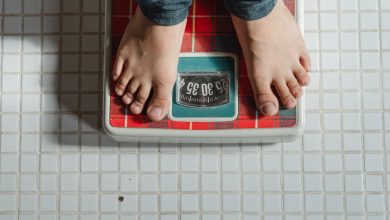How Many Calories Do You Burn By Walking?

Walking is one of the most accessible and enjoyable forms of exercise that can be done by nearly anyone, at any fitness level. It’s an excellent way to stay active and contribute to your overall health. But how many calories does walking burn? The answer depends on several factors such as your weight, walking speed, and the terrain you’re covering.
In this blog, we’ll explore the factors that influence calorie burn, provide a guide to estimate how many calories you can burn, and offer tips to maximize your walking workouts.
Factors That Affect Calories Burned While Walking
Several key factors determine how many calories you’ll burn while walking:
- Body Weight: The heavier you are, the more calories you burn during physical activity. This is because it requires more energy to move a larger mass.
- Walking Speed: The faster you walk, the more calories you’ll burn. A brisk pace elevates your heart rate and makes your muscles work harder.
- Walking Distance: Naturally, the more distance you cover, the more calories you’ll burn. Walking for a longer duration increases overall energy expenditure.
- Terrain: Walking on flat ground burns fewer calories compared to walking uphill or on uneven surfaces, which require more effort and engage more muscles.
- Age and Fitness Level: Your age and fitness level also play a role. Typically, younger individuals with more muscle mass burn more calories at rest and during physical activity.
Estimating Calories Burned While Walking
To help you estimate how many calories you burn while walking, let’s break it down by different walking speeds and weights. Below is a general guide based on averages, but keep in mind that individual variations will occur.
| Weight (lbs) | 2.0 mph (calories/hour) | 3.0 mph (calories/hour) | 4.0 mph (calories/hour) |
|---|---|---|---|
| 125 | 136 | 204 | 340 |
| 155 | 176 | 255 | 422 |
| 185 | 204 | 300 | 488 |
| 215 | 232 | 346 | 554 |
Explanation of the table:
- 2.0 mph represents a leisurely pace, ideal for casual walks.
- 3.0 mph is a moderate pace, akin to an average walking speed.
- 4.0 mph is a brisk pace, bordering on power walking.
For example, a person weighing 155 lbs walking at 3 mph (moderate pace) will burn about 255 calories per hour.
How to Increase Calorie Burn While Walking
If you want to maximize the calories burned during your walks, here are some tips to help you get the most out of each step:
- Walk Faster: Increasing your speed is one of the easiest ways to burn more calories. Aim for a brisk pace that raises your heart rate and makes conversation more difficult.
- Add Intervals: Incorporating intervals of faster walking or short bursts of jogging can increase the intensity of your workout and boost calorie burn.
- Use Inclines: Walking uphill or on stairs forces your muscles to work harder, significantly increasing the number of calories burned.
- Add Weights: Carrying small dumbbells or using a weighted vest while walking can enhance resistance, helping you burn more calories.
- Walk Longer: Simply extending the duration of your walk is an easy way to burn more calories, especially if you’re enjoying a scenic route or listening to a good podcast.
Benefits of Walking Beyond Calorie Burn
While burning calories is a key benefit of walking, there are many other health advantages associated with this simple exercise:
- Heart Health: Regular walking helps improve cardiovascular health by lowering blood pressure, improving circulation, and reducing the risk of heart disease.
- Mental Health: Walking, especially in nature, has been shown to reduce stress, anxiety, and depression. It’s a great way to clear your mind and boost your mood.
- Weight Management: Consistent walking can help you maintain or lose weight by burning calories and increasing your metabolic rate.
- Muscle Toning: Walking tones the muscles in your legs, hips, and core, especially if you incorporate hills or stairs into your route.
- Joint Health: Walking is a low-impact exercise, making it easier on your joints compared to running or jumping exercises. It can help improve joint flexibility and reduce stiffness, particularly for people with arthritis.
How to Track Your Walking Calories
Thanks to modern technology, tracking how many calories you burn while walking has never been easier. Here are some popular methods:
- Fitness Apps: Apps like MyFitnessPal, Strava, and Google Fit allow you to log your walks and estimate calorie burn based on speed, distance, and personal factors like weight.
- Fitness Trackers: Devices like Fitbit, Garmin, and Apple Watch automatically track your steps, distance, and heart rate, giving you a more accurate estimate of calories burned.
- Heart Rate Monitors: Wearing a heart rate monitor can provide a more precise estimate of calories burned, especially during more intense or interval-based walking workouts.
Conclusion
Walking is an excellent, low-impact exercise that burns calories, improves health, and boosts well-being. Whether you’re just starting your fitness journey or looking to maintain an active lifestyle, walking is a fantastic way to stay in shape. The number of calories you burn will depend on your weight, pace, and duration, but with a little effort, you can increase that burn and enjoy all the additional benefits walking has to offer.



